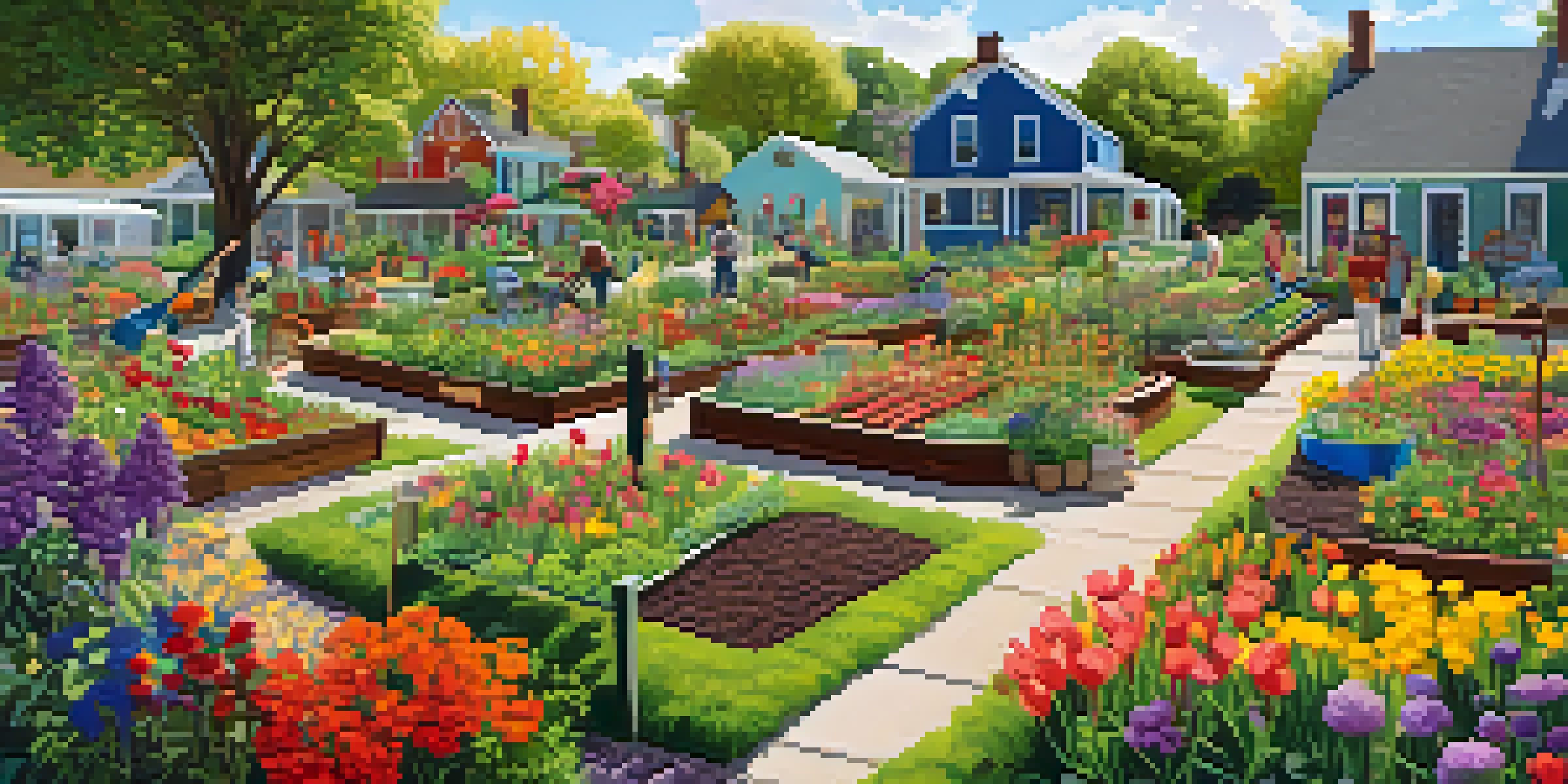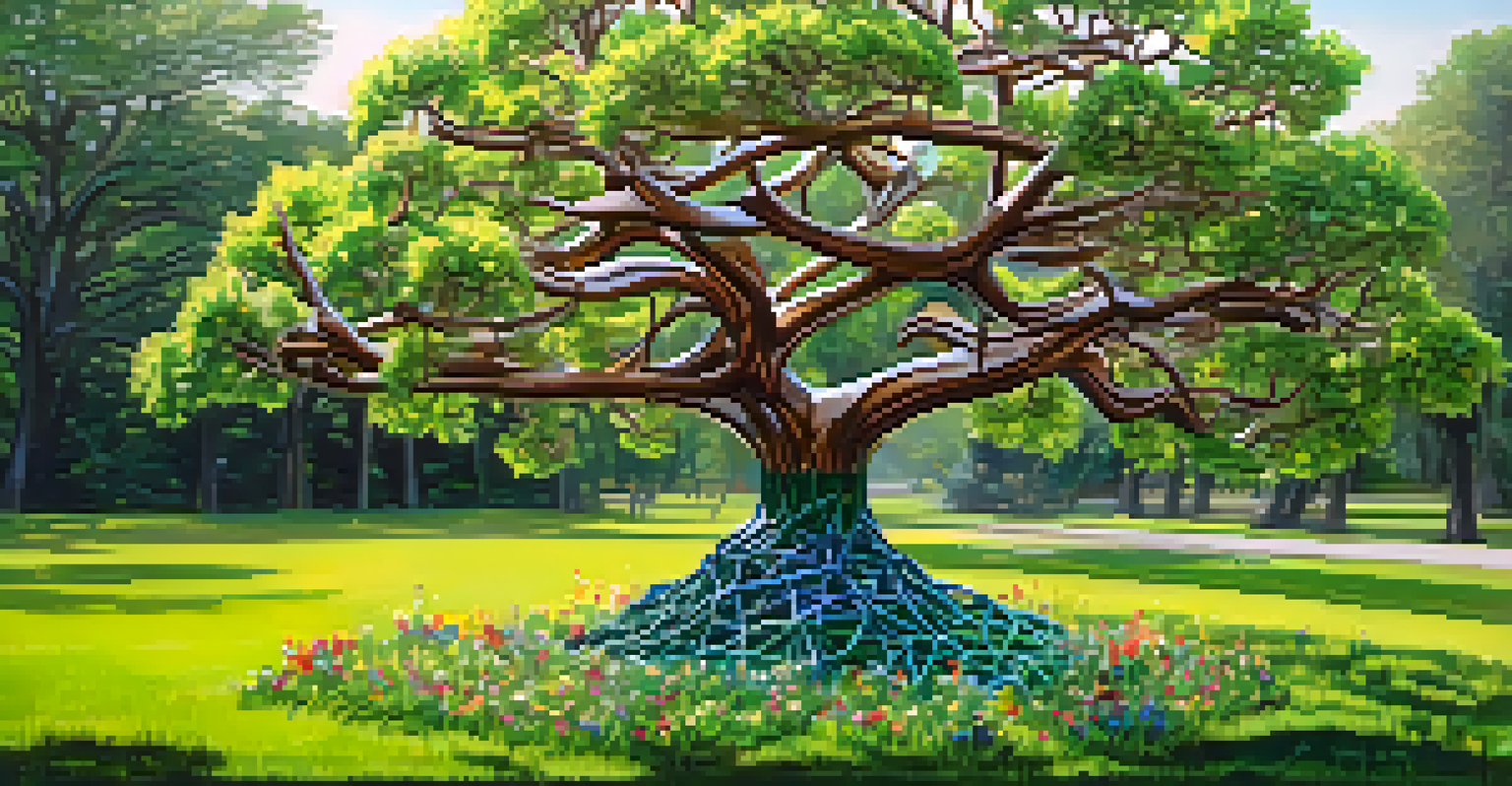Exploring Eco-Art: Blending Nature and Creativity

What is Eco-Art and Its Significance?
Eco-art is a movement that intertwines art with ecological awareness. It challenges artists to use their creativity to highlight environmental issues and promote sustainability. By engaging with nature, eco-artists aim to inspire audiences to reflect on their relationship with the environment.
Art is a way of expressing what we feel about the world, and it can be a powerful tool for social change.
This form of art often utilizes natural materials or themes, making the artwork itself a commentary on ecological concerns. For instance, a sculpture made from recycled plastics can serve as a powerful reminder of pollution and waste. Through such creations, eco-artists invite viewers to reconsider their impact on the planet.
Ultimately, eco-art serves not just as an aesthetic experience but as a call to action. It encourages a dialogue around environmental sustainability, prompting us to think critically about our choices and their consequences on the Earth.
The History and Evolution of Eco-Art
The roots of eco-art can be traced back to the environmental movements of the 1960s and 70s. Artists began to explore how their work could address pressing ecological issues, such as pollution and deforestation. This period saw a shift from traditional art forms to more experimental and nature-focused approaches.

As awareness of environmental challenges grew, so did the popularity of eco-art. Artists like Robert Smithson and Andy Goldsworthy became pioneers, using earth as their canvas. Their works often blended seamlessly into natural settings, showcasing the beauty of the environment while raising awareness of its fragility.
Eco-Art Promotes Environmental Awareness
Eco-art uses creativity to highlight ecological issues, encouraging audiences to reflect on their relationship with the environment.
Over the years, eco-art has continued to evolve, incorporating modern technologies and materials. Today, artists are using digital mediums and interactive installations to engage audiences in new ways, creating a dynamic dialogue between art, nature, and sustainability.
Materials and Techniques in Eco-Art
One of the defining features of eco-art is the choice of materials. Artists often utilize found objects, natural elements, and recycled materials to create their works. This not only minimizes waste but also emphasizes the importance of sustainability in artistic practices.
The artist must be a guardian of the environment, using their creativity to inspire others to respect and protect our planet.
Techniques in eco-art can vary widely, from land art, which transforms landscapes, to more delicate forms of installation art that invite viewer interaction. For example, an artist might construct a temporary installation using twigs and leaves, allowing it to decompose naturally over time. This impermanence highlights the cycle of life and the transient nature of both art and the environment.
By experimenting with different materials and techniques, eco-artists challenge conventional notions of what art can be. They push boundaries, encouraging us to see beauty in the ephemeral and to appreciate the natural world in innovative ways.
Eco-Art and Community Engagement
Eco-art often transcends the boundaries of traditional art spaces, reaching into communities and public spaces. Many eco-artists collaborate with local communities to create projects that resonate with cultural and environmental issues specific to that area. These collaborations foster a sense of ownership and pride among participants.
For instance, community gardens transformed into living art installations not only beautify neighborhoods but also promote sustainability and local food production. Such projects engage residents in meaningful ways, encouraging them to connect with nature and each other.
Community Engagement is Essential
Eco-art projects often involve local communities, fostering a sense of ownership and promoting sustainability through collaborative efforts.
Moreover, eco-art can serve as a powerful educational tool. Workshops and interactive installations invite people of all ages to learn about environmental issues while participating in the creative process. This hands-on approach cultivates a deeper understanding of sustainability and the role each individual can play.
The Impact of Eco-Art on Environmental Awareness
Eco-art plays a crucial role in raising awareness about environmental issues. By using art as a medium, artists can communicate complex ecological concepts in engaging and relatable ways. This accessibility can inspire action and change in audiences who may not otherwise engage with environmental topics.
For example, striking visuals and thought-provoking installations can spark conversations about climate change, biodiversity loss, and pollution. These discussions can lead to increased awareness and motivate individuals to adopt more sustainable practices in their daily lives.
Additionally, eco-art highlights the beauty of nature, reminding us of what is at stake. By showcasing the wonders of the natural world, artists encourage viewers to appreciate and protect it, fostering a sense of stewardship for the planet.
Challenges Faced by Eco-Art Practitioners
Despite its growing popularity, eco-art faces several challenges. One significant hurdle is funding, as many eco-art projects rely on grants or community support. This can make it difficult for artists to realize their visions, especially for large-scale installations that require significant resources.
Moreover, the ephemeral nature of much eco-art can lead to questions about its permanence and impact. While temporary installations can be powerful, they may not leave a lasting impression compared to traditional art forms. Artists must often find innovative ways to document and share their work to reach a broader audience.
Challenges in Eco-Art Practice
Eco-art practitioners face funding difficulties and the need to document ephemeral works while staying informed about sustainability issues.
Lastly, eco-art practitioners must navigate the complexities of environmental issues themselves. Staying informed about sustainability practices and ecological impacts can be demanding, but it's essential for artists to align their work with their message. This ongoing commitment to learning and adaptation is vital for the integrity of eco-art.
The Future of Eco-Art: Trends and Innovations
As the world grapples with increasing environmental challenges, the future of eco-art looks promising. Artists are integrating technology in exciting ways, using virtual reality and augmented reality to create immersive experiences that engage audiences deeply. These innovations can transport viewers to distant ecosystems, fostering empathy for the environment.
Another emerging trend is the focus on community resilience. Eco-artists are increasingly addressing social issues alongside environmental concerns, recognizing the interconnectedness of these challenges. Projects that promote social equity, such as urban green spaces, highlight the role of art in fostering sustainable communities.

Ultimately, the future of eco-art lies in collaboration and inclusivity. By bringing together diverse voices and perspectives, artists can create impactful works that resonate with a broader audience. This collaborative spirit will be essential for driving change and inspiring collective action for a healthier planet.